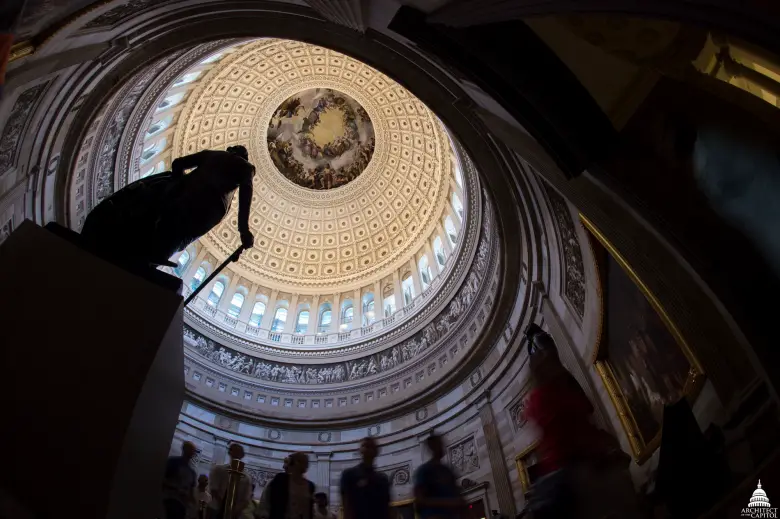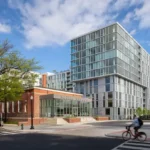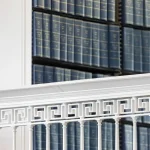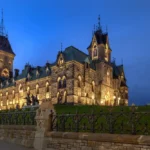United States Capitol dome restoration, America building repairs news, USA project design
United States Capitol America : Architecture
Dome Restoration at Famous Washington DC Building, United States of America: US Property Renewal Completion
Capitol Hill, Washington, D.C
Renewal Design: Stephen T. Ayers, FAIA ; Architect-of-record: Hoffman Architects
The U.S. Capitol Dome Restoration is Complete
After two years of meticulous repairs led by Architect of the Capitol Stephen T. Ayers, FAIA, along with architect-of-record Hoffman Architects, the historic landmark is now back to its former glory.
Rotunda Reopens to the Public
Following the successful completion of its restoration, people are now allowed back into this beautiful, hallowed space.
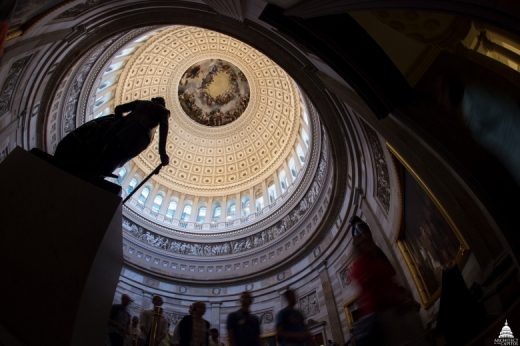
photograph courtesy of U.S. Capitol
Nov 23, 2016
United States Capitol Dome Restoration
As it appears today, the U.S. Capitol Rotunda is the result of two distinct building campaigns. Dr. William Thornton, who won the competition for the design of the U.S. Capitol in 1793, conceived the idea of a central rotunda. Due to a shortage of funds and materials, sporadic construction phases, and the fire set by the British in 1814, the Capitol Rotunda was not begun until 1818. The Rotunda was completed under the direction of Charles Bulfinch by the time of the visit of the Marquis de Lafayette in 1824. Conceived in the age of neoclassicism, the Rotunda was intended to recall the Pantheon, the ancient Roman temple.
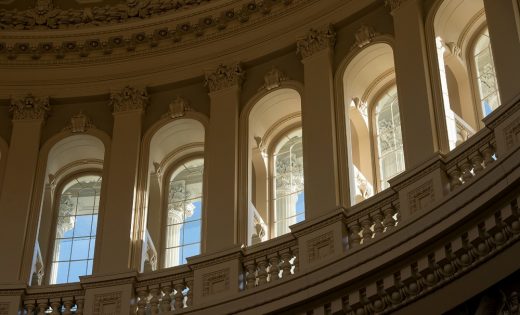
photo courtesy of U.S. Capitol
Bulfinch created in the U.S. Capitol Rotunda an ambitious orchestration of architecture, sculpture and painting. The curved sandstone walls are divided by fluted Doric pilasters with wreaths of olive branches carved in the frieze above. Eight framed niches hold large historical paintings. Four revolutionary period scenes were commissioned by Congress from John Trumbull in 1817: Declaration of Independence, Surrender of General Burgoyne, Surrender of Lord Cornwallis, and General George Washington Resigning his Commission. They were placed between 1819 and 1824. Four scenes of early exploration were added between 1840 and 1855: Landing of Columbus by John Vanderlyn, Discovery of the Mississippi by William Powell, Baptism of Pocahontas by John Chapman, and Embarkation of the Pilgrims by Robert Weir.
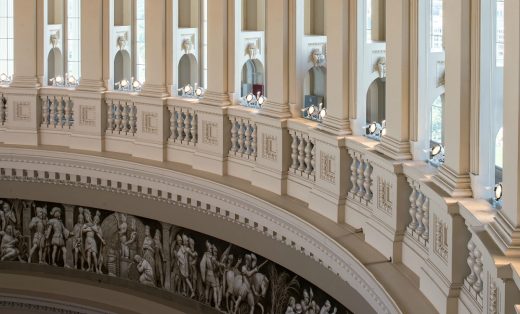
image courtesy of U.S. Capitol
Four wreathed panels above the paintings frame portrait busts of the early explorers John Cabot, Christopher Columbus, Sir Walter Raleigh, and Sieur de La Salle. In the relief panels above the four entrances are scenes from American colonial history: Conflict of Daniel Boone and the Indians and Landing of the Pilgrims by Enrico Causici, Preservation of Captain Smith by Pocahontas by Antonio Capellano, and William Penn’s Treaty with the Indians by Nicholas Gevelot.
The sandstone walls of the Rotunda rise 48 feet above the floor. Everything above this line was added between 1855 and 1866 by Thomas U. Walter, who designed the north and south extensions of the Capitol Building. Congress authorized the new high dome of fireproof cast iron to bring the center portion of the U.S. Capitol into harmony with the large new wings.
Walter’s 1859 section of the new dome and enlarged Rotunda showed a fresco in the canopy over the eye of the inner dome and a sculpted frieze at the base of the dome. Constantino Brumidi painted The Apotheosis of Washington in true fresco on the canopy in 1865. The figures, up to 15 feet tall, were painted to be intelligible from close up as well as from 180 feet below.
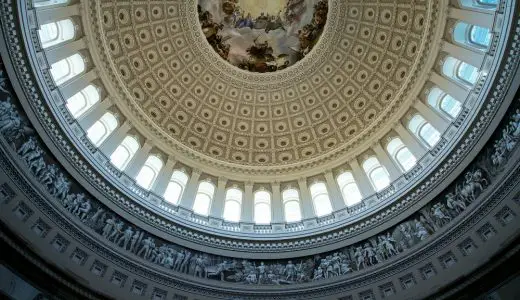
image courtesy of U.S. Capitol
The frescoed frieze in the belt just below the 36 windows was painted to give the illusion of a sculpted relief. The scenes designed by Brumidi trace America’s history from its discovery by Columbus to the discovery of gold in California, with emphasis on Spanish explorers and the Revolutionary War. Brumidi prepared a sketch for the frieze in 1859, but he was not authorized to begin work until 1877. After Brumidi’s death in 1880, Filippo Costaggini was commissioned to complete the eight remaining scenes following Brumidi’s sketches. However, when the frieze was finished in 1889, a gap of over 31 feet remained. The frieze was finally completed by Allyn Cox in 1953 with scenes of the Civil War, the Spanish-American War, and the Birth of Aviation.
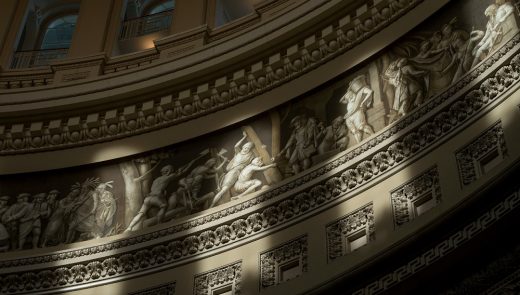
image courtesy of U.S. Capitol
The statues and busts in the Capitol Rotunda are primarily of presidents, including a copy of a statue of George Washington by Antoine Houdon. The marble statue of Abraham Lincoln is by Vinnie Ream, for whom Lincoln sat. She was the first woman artist to receive a government commission. Other former presidents commemorated with statues in the Rotunda include Dwight David Eisenhower, James Garfield, Ulysses S. Grant, Andrew Jackson, Thomas Jefferson, Ronald Wilson Reagan, and Gerald Ford. The sculpture in the Rotunda also includes representations of Alexander Hamilton, Dr. Martin Luther King, Jr. and the Portrait Monument to Lucretia Mott, Elizabeth Cady Stanton, and Susan B. Anthony.
Website: United States Capitol Dome Restoration
United States Capitol
Capitol Hill, Washington, D.C
1793-
Architects: William Thornton with Stephen Hallet;
Benjamin Latrobe; Charles Bulfinch
Thomas Jefferson set a design competition in 1792
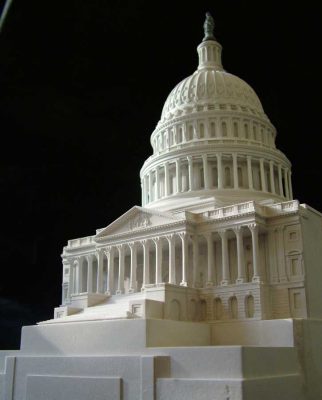
Model by Timothy Richards, Bath, England
United States Congress meeting place
First session of United States Congress in 1800
Architectural Influences on the US Capitol Building:
The United States Capitol is the meeting place of the United States Congress, the legislature of the U.S. federal government. Located in Washington, D.C., it sits atop Capitol Hill at the eastern end of the National Mall. Though it has never been the geographic center of the federal district, the Capitol is the origin by which the quadrants of the District are divided and the city was planned.
Officially, both the east and west sides of the Capitol are referred to as fronts. Historically, however, only the east front of the building was intended for the arrival of visitors and dignitaries. Like the federal buildings for the executive and judicial branches, it is built in the distinctive neoclassical style and has a white exterior.
U.S. Capitol Visitor Center, Washington, DC
2009
RTKL
U.S. Capitol Visitor Center
Location: United States Capitol, Capitol Hill, Washington DC, USA
Washington DC Architecture – Selection
Freelon Adjaye Bond Smith Group
National Museum of African American History and Culture : Designs
Newseum, 555 Pennsylvania Ave., N.W., Washington DC
Polshek Partnership with Ralph Appelbaum Associates
Newseum Washington DC
– Robert and Arlene Kogod Courtyard
Foster + Partners
Smithsonian Institute
Swiss Embassy
Design: Steven Holl Architects
Washington DC building
1100 and 1150 First Street, Washington DC
Krueck & Sexton with Gensler
Washington DC offices
Arab Cultural Center Washington DC : Architecture Competition
Website: Visit Washington D.C.
Neighbouring State/Country Architecture to Washington DC
Virginia Architecture
Pennsylvania Architecture
Comments / photos for the United States Capitol America Architecture renewal design by Stephen T. Ayers, FAIA ; Architect-of-record: Hoffman Architects page welcome.
Website: www.aoc.gov/us-capitol-building

